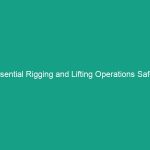Introduction
Good morning team! Today, we’re going to discuss a vital topic that affects us all in the workplace: Essential Sharp Tool Handling Safety Guidelines: Avoid These Common Risks. Sharp tools are necessary for our daily tasks, but they can also pose significant Hazards if not handled correctly. Understanding and applying these Safety guidelines is crucial for preventing injuries and ensuring a safe work Environment.
Understanding Essential Sharp Tool Handling Safety Guidelines
When we talk about sharp tool handling safety guidelines, we refer to the set of Best Practices designed to minimize risks associated with using tools like knives, scissors, chisels, and other cutting instruments. Proper handling of these tools not only protects you but also your coworkers and the overall workplace environment.
Many employees believe that using sharp tools is simply about being careful; however, it encompasses a range of safety protocols that must be followed. Ignoring these guidelines can lead to severe injuries, including lacerations and puncture wounds, resulting in lost workdays and potential long-term disabilities.
Key Hazards, Risks, and Safety Considerations
Sharp tools present various hazards, including:
- Improper Use: Using the wrong tool for a task can increase the risk of accidents. For example, using a utility knife to open a box instead of a box cutter can lead to injuries.
- Lack of Safety Equipment: Not wearing appropriate Personal Protective Equipment (PPE) such as cut-resistant gloves can heighten the risk of injury.
- Distraction: Being distracted while using sharp tools can lead to accidents. Focus is crucial when handling any cutting instrument.
- Inadequate Training: Employees who are not properly trained in using sharp tools may not understand the risks or how to mitigate them.
Ignoring these safety considerations can result in real-world consequences, including serious injuries that might require medical attention, impact productivity, and lead to costly workers’ compensation claims.
Best Practices, Procedures, & Actionable Advice
Step-by-Step Safety Procedures
To promote safe handling of sharp tools, follow these essential Best Practices:
- Always Use the Right Tool: Ensure you are using the correct tool for each task. Familiarize yourself with the tools available and their intended uses.
- Inspect Tools Regularly: Before use, inspect sharp tools for any damage or wear. Dull blades can cause more accidents than sharp ones because they require more force to cut.
- Maintain a Clean Work Area: Keep your workspace tidy to avoid accidents. Clutter can lead to distractions and mishaps while using sharp tools.
- Store Tools Properly: After use, store sharp tools in designated areas, away from reach when not in use. Use blade guards or sheaths to protect the edges and prevent accidental cuts.
- Use PPE: Always wear appropriate PPE, such as cut-resistant gloves and Safety Goggles, to protect yourself from potential injuries.
- Keep Your Focus: Stay alert and focused while using sharp tools. Avoid distractions, and if you feel fatigued, take a break.
Real-Life Examples
Let’s talk about a couple of real-world incidents that highlight the importance of these safety practices:
- In a manufacturing facility, an employee used a dull knife to cut through packaging. The increased force led to the knife slipping and causing a severe laceration on the employee’s hand. This incident could have been avoided with a proper tool inspection and the use of a sharper knife.
- Another case involved a construction worker who was distracted by a conversation while using a utility knife. He accidentally cut himself because he wasn’t paying attention to his hand’s position. This emphasizes the need for focus while handling sharp instruments.
Regulations, Standards, and Compliance
It’s crucial to adhere to safety Regulations and Standards, such as those outlined by OSHA (Occupational Safety and Health Administration). osha provides guidelines for the safe use of tools, including the requirement for appropriate training and the use of PPE.
Compliance with these regulations not only protects employees but also helps the company avoid legal issues and fines. Following these guidelines ensures that everyone is working in a safe environment, minimizing the risk of accidents and injuries.
Employee Engagement & Discussion
Now that we’ve covered the essential guidelines and practices, let’s open the floor for discussion. I want to hear from you:
- What safety challenges have you encountered related to sharp tool usage?
- Have you ever experienced or witnessed an accident involving sharp tools? What could have been done to prevent it?
- What additional Safety Measures do you think we could implement to improve our sharp tool handling practices?
Conclusion & Key Takeaways
In summary, understanding and applying essential sharp tool handling safety guidelines is critical for ensuring a safe workplace. By using the right tools, maintaining focus, wearing PPE, and staying compliant with safety regulations, we can significantly reduce the risks associated with sharp tools.
Let’s commit to prioritizing safety in our daily operations. Remember, it’s not just about following rules; it’s about looking out for each other and creating a safer working environment. Thank you for your attention and your commitment to safety today!


